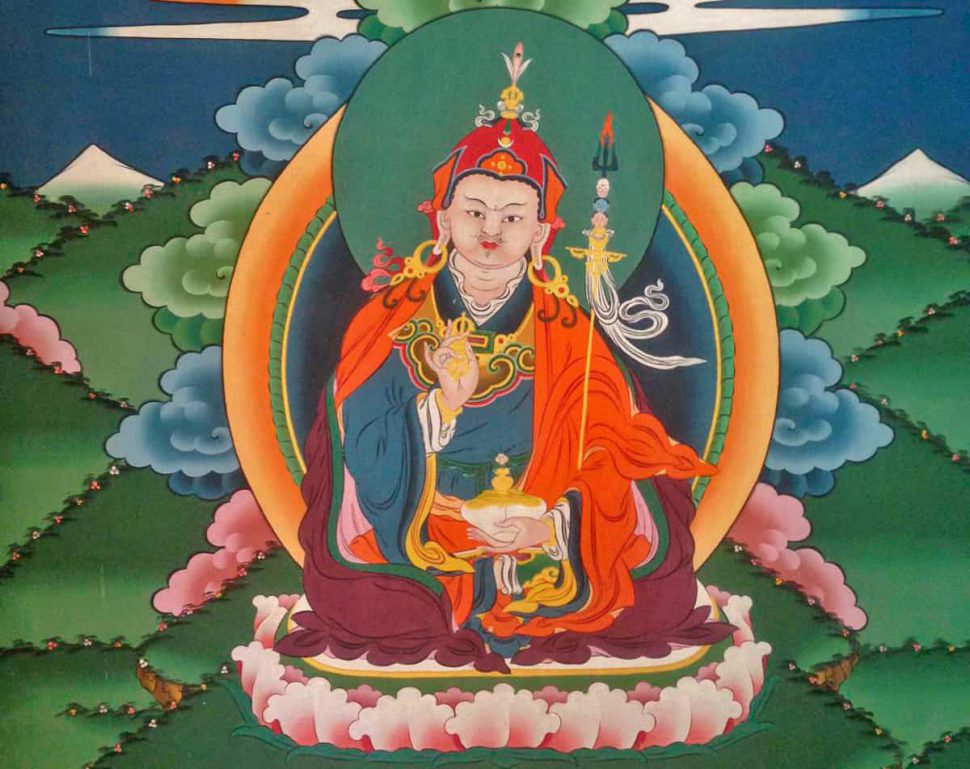Bhutanese culture centers around Buddhism and there are many significant cultural figures you will see depicted throughout the country. The three most important figures in Bhutan are the Buddha, Guru Rinpoche (pronounced “Goo-roo Rin-po-ch-ay”), and Shabdrung Ngawang Namgyal (or just “Shabdrung” and pronounced “Shab-Drung”). These three are commonly portrayed together in statues and in paintings known as thangkas (pronounced “tonkas”). The Buddha is typically depicted in the center with Guru Rinpoche to his left and Shabdrung to his right.
As we travel through Bhutan it will be helpful to know how to identify these historical figures and know why they are important to Bhutanese culture.
The Buddha
The Buddha, born Siddhartha Gautama, was born in Nepal in 500 BC. At the age of 35 he famously meditated for 49 days under a Bodhi Tree which led to his enlightenment or awakening. During his meditation he realized the cause of suffering and how to end it which in turn led to the Four Noble Truths and the basis of Buddhism. He thus became known as the Buddha which means “awakened one.” There are many Buddhas (awakened ones) and he is also at times referred to as Buddha Sakyamuni (prounounced “sack-a-moon-e”).

The Buddha Sakyamuni is the most commonly depicted figure in Buddhism. Just as he is depicted above, he is most often sitting with his legs crossed on a lotus throne with his right hand touching the Earth and left hand with his palm up above his lap. He has blueish hair, a halo of light above his head, and long earlobes.
Guru Rinpoche
Guru Rinpoche introduced the Tantric form of Buddhism to Bhutan and Tibet. His name Guru Rinpoche literally means “precious teacher.” He is also known as Guru Padmasambhava (pronounced “Padma-Sam-Bava”) meaning “lotus born.” In 800 AD, after having spread Tantric Buddhism through India and Tibet, he legendarily transformed his consort Yeshe Tsogyal into a flying tigress. She famously flew him to Taktsang (Tiger’s Nest) where he meditated in caves high up on the cliffs.

Guru Rinpoche is easily distinguishable due to his unique mustache. He carries a dorje (pronounced “door-g”) in his right hand and skull cup in his left hand. Leaning across his shoulder is a trident with three heads that represent victory over desire, anger, and ignorance.
Shabdrung
Shabdrung Ngawang Namgyal is commonly known as “the unifier” of Bhutan. Ngawang Namgal is his given name while Shabdrung is a title given to high lamas in Tibet. Most people simply refer to him simply as Shabdrung. In the 1630s he conquered a group of warring fiefdoms and unified them into a single Bhutan led by an administrative ruler (Druk Desi) and a religious ruler (Je Khempo).

Shabdrung wears monks robes and has a green halo around his head. He is easily identified by his distinctive pointed beard.

